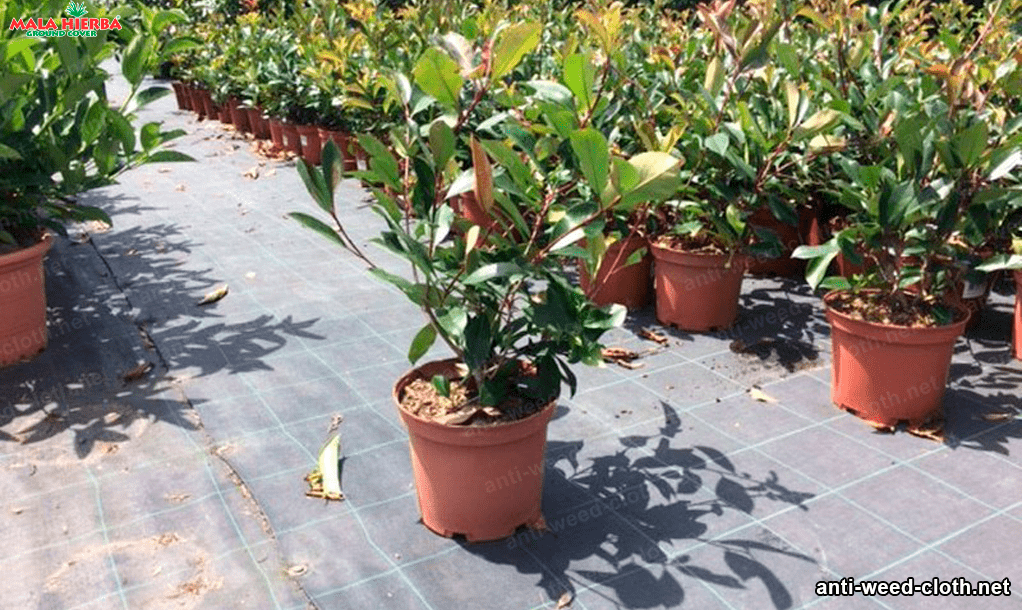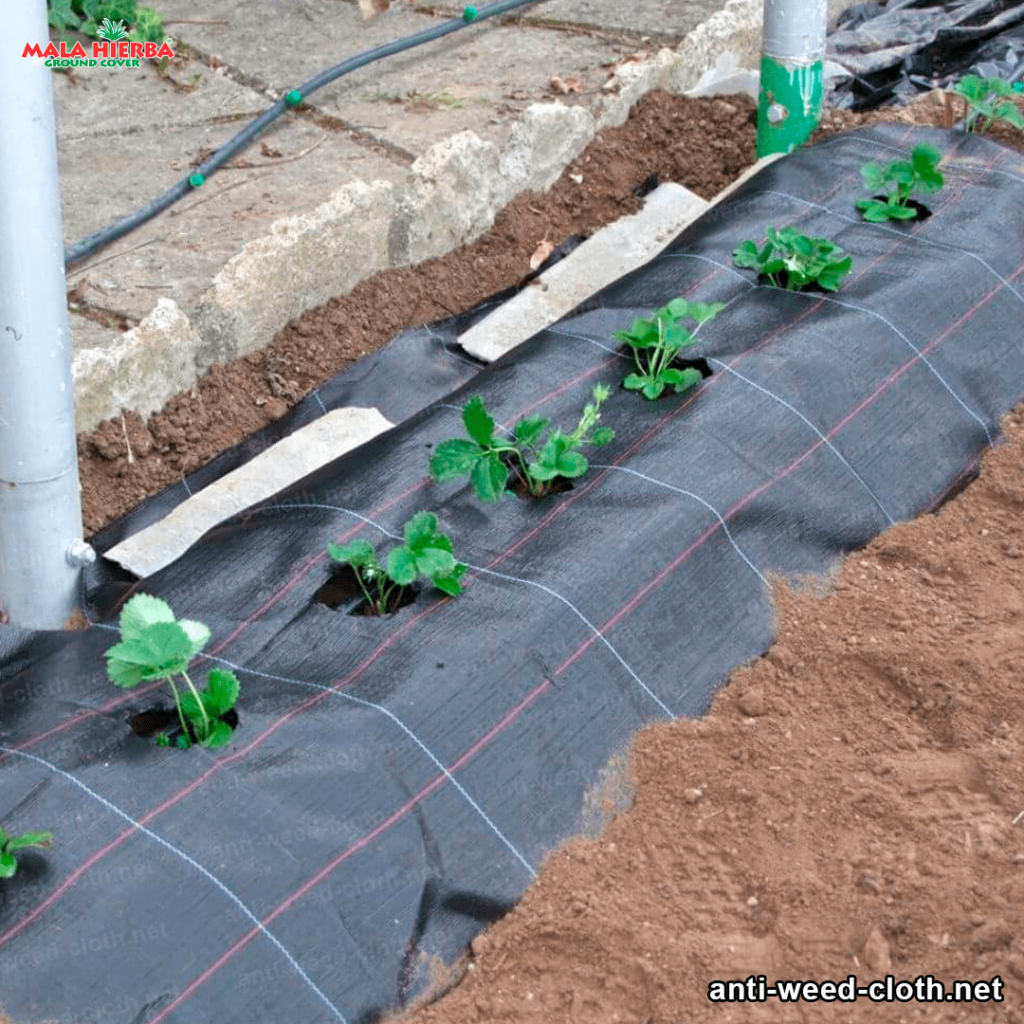Introduction
In recent years, the anti-weed blanket has become one of the most important elements in the fight against weeds worldwide. This agricultural solution has been collaborating with farmers to overcome the weed problem. These flat blankets have innovative and versatile physical qualities that make them truly exceptional for crop protection.
Weeds have been a problem for farmers for years. These unwanted plants interfere with crops, stealing nutrients and water, and cause farmers to spend more hours controlling them. In addition, there are herbicide and pesticide problems that can be avoided by inserting the anti-weed blanket into the crops themselves.
Use of the anti-weed blanket is advancing rapidly in recent years
And has proven to be extremely useful for growers looking to contain weeds without the use of hazardous chemicals. This webbing also incorporates biodegradable properties. This means that it decomposes in the soil after a period of time. Making fertilization and nutrient transport in the soil easy and natural.
Antimulus blanket is generally compose of very soft polyester mesh, aluminum and polyester fabric modifications. This combination of materials provides sunlight resistance and heat resistance. The label is also resistant to aging, which means that it can be used repeatedly over a long period of time.
anti-weed blanket is weed-resistant, weather-resistant, spiral wound, cut-resistant, impact-resistant and abrasion-resistant. These qualities allow weeds to grow under the fabric. But, the fabric prevents the weed’s stems, subway stems and roots from moving through it.
This blanket can be customize according to the farmer’s needs and preferences. This means it can be used above ground, below ground and the fabric can be trimmed. Configured and sealed to meet specific project requirements.
As a result of its reliability and low cost, the anti-weed blanket has spread around the world and has become the best choice for farmers for weed control
The blanket can be applied in open fields, flooded areas and organic farms. This agricultural solution has been tested and proven to be one of the most effective solutions to combat the effects of weeds on crops.
The anti-weed blanket also offers benefits for the environment. One of the main concerns of farmers is the application of chemicals on the surface. Resulting in air pollution and soil contamination. With weed mulch, these problems are reduce, including improve crop health. Reduce soil erosion, increase food production, improve soil fertility and decreased use of chemical pesticides and herbicides.

The anti-weed blanket is an invaluable tool for farmers facing the problem of weeds in their fields
This effective agricultural solution offers not only protection against weeds, but also numerous other benefits for crops. This is the ideal solution for modern farmers looking to keep their fields free of weeds in an environmentally non-toxic way.
Why it is essential to avoid weed growth in ornamental crops?
Weed growth in ornamental crops is something we should avoid at all costs. This is essential to keep our plants healthy and increase their quality. Which is vital if we want our ornamental plants to be beautiful and sustain their value.
To really understand why weed growth in ornamental plant crops should be avoided, we must first understand its effects. Weeds are uncontrollable wild grasses and vines that develop in yards and gardens. Competition for soil, water and nutrients between weeds and ornamentals is inevitable, which will have a direct effect on the health and performance of ornamentals. Weeds will quickly spread throughout the flowers and plants in the garden, and as a result these plants will be reduce in size and dehydrated, not having enough soil, water and nutrients to grow properly. This will cause the quality of the ornamental plants to deteriorate and gradually weeds will eventually dominate the crops.
In addition to affecting the quality and size of the ornamental plants, weeds can also hinder the exchange of sunlight between them, reducing the amount of light absorbed by their leaves. Weeds can also absorb nutrients and water instead of the ornamental plants, which could well be fatal to the ornamental plants. All this explains why weed growth should be avoid at all costs; otherwise, the aesthetics of our garden will be radically affect and, therefore, we will have a neglected-looking garden.
Controlling weeds in ornamental crops is the solution to weed growth, and there are different methods to achieve this
The most common method is pruning, which consists of removing stems and leaves from grafted plants, which reduces the size of the plants and reduces their level of competition with weeds. Crop rotation, where crops are alternate each season, is also a very useful technique to prevent the spread of weeds. Ornamental plants can also be graft with weed-proof plants to improve their resistance and reduce their competition wit h wild weeds.
Another weed control measure commonly adopted at the landscape level is composting. If a layer of compost is apply to the soil before planting, we are likely to have better weed control for a considerable time, in addition to promoting plant growth and health. Finally, specific herbicides can also be use to control weeds, exactly as is done with insects. Which can help us keep weed density at an acceptable level.
There is no denying that weed growth in ornamental crops is severely detrimental to the plants. If we want to maintain a beautiful and healthy looking garden, we have to avoid weed growth at all costs. This means using methods such as pruning, crop rotation, weed-proof planting, composting and targeted herbicides. In this way, we will be able to maintain the health of our ornamental plants and prevent weeds from spreading and dominating the crops.

Diseases can weeds transmit to plantation and nurseries
Weeds are one of the most common types of plants in all parts of the world. These plants are usually found in remote areas and are a constant threat to the cultivation of other types of plants. This is because there are a number of diseases and health problems that can be transmitt by these plants to people, plants and nurseries.
First, there are many kinds of infectious diseases that can be transmitt by weeds to plants and nurseries. Some of these diseases are fusarium, botrytis, powdery mildew, moths and fungi. These diseases can cause crop losses and health problems for people working with the plants, and can lead to crop destruction by infecting the crop. This means that growers must take special precautions to protect their plants from these diseases.
Measures include the use of treatments, fertilizers and pesticides, as well as a crop monitoring routine. In addition to infectious diseases, weeds can also transmit virus diseases, especially if a diseased plant is transported by wind to a different location. They can also transmit fungal diseases, such as wood rot. These diseases can spread through weeds and infect nearby crops. This can lead to crop death and low yields. This can also cause damage to food imports, as some of these diseases can spread through fruits and vegetables.
Weeds can also spread insects that damage crops
This includes insects such as moth, whitefly, parsitoid and mite. These insects can cause crop damage such as defoliation and injury, leading to a decrease in food production. These insects can also transmit infectious diseases, such as spider mite virus. This means that growers need a good pest control program to maintain the health of their crops.
It is important to recognize that there are many kinds of diseases, health problems, and damage that can be transmitt by weeds to crops and nurseries. Growers need to take the necessary steps to prevent damage and disease, as well as take special precautions to protect themselves. This includes the use of treatments, fertilizers and pesticides, as well as constant examination of crops to detect diseases early. By doing this, farmers can ensure that they will be successful in food production.
